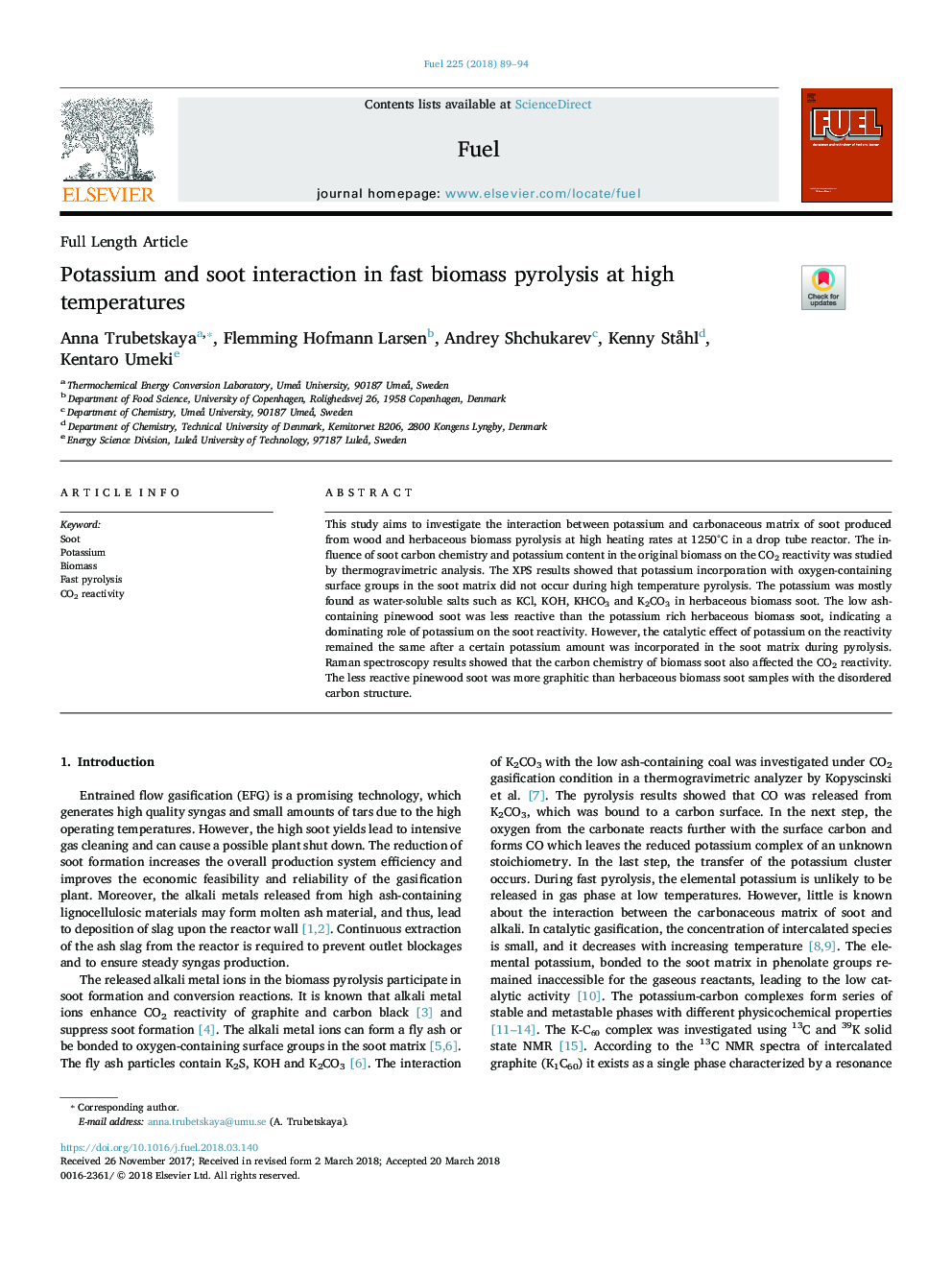| Article ID | Journal | Published Year | Pages | File Type |
|---|---|---|---|---|
| 6630979 | Fuel | 2018 | 6 Pages |
Abstract
This study aims to investigate the interaction between potassium and carbonaceous matrix of soot produced from wood and herbaceous biomass pyrolysis at high heating rates at 1250°C in a drop tube reactor. The influence of soot carbon chemistry and potassium content in the original biomass on the CO2 reactivity was studied by thermogravimetric analysis. The XPS results showed that potassium incorporation with oxygen-containing surface groups in the soot matrix did not occur during high temperature pyrolysis. The potassium was mostly found as water-soluble salts such as KCl, KOH, KHCO3 and K2CO3 in herbaceous biomass soot. The low ash-containing pinewood soot was less reactive than the potassium rich herbaceous biomass soot, indicating a dominating role of potassium on the soot reactivity. However, the catalytic effect of potassium on the reactivity remained the same after a certain potassium amount was incorporated in the soot matrix during pyrolysis. Raman spectroscopy results showed that the carbon chemistry of biomass soot also affected the CO2 reactivity. The less reactive pinewood soot was more graphitic than herbaceous biomass soot samples with the disordered carbon structure.
Related Topics
Physical Sciences and Engineering
Chemical Engineering
Chemical Engineering (General)
Authors
Anna Trubetskaya, Flemming Hofmann Larsen, Andrey Shchukarev, Kenny Ståhl, Kentaro Umeki,
